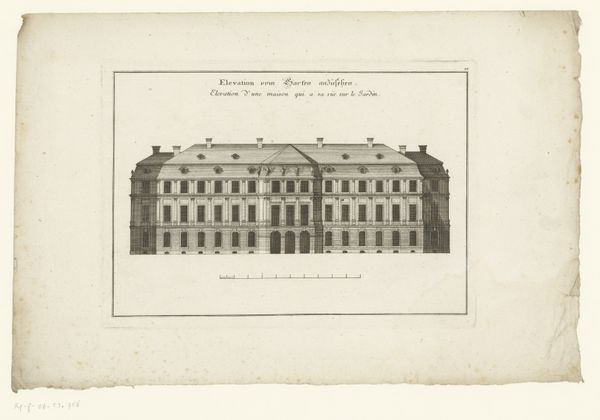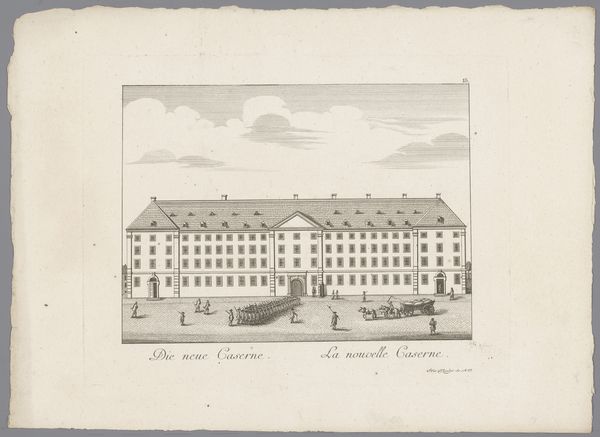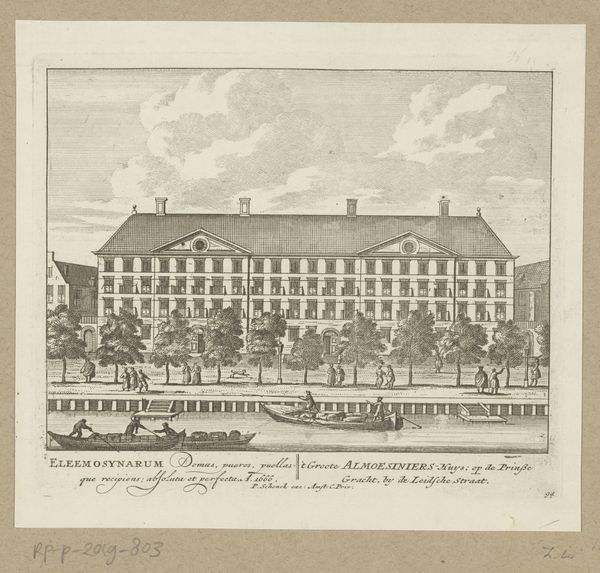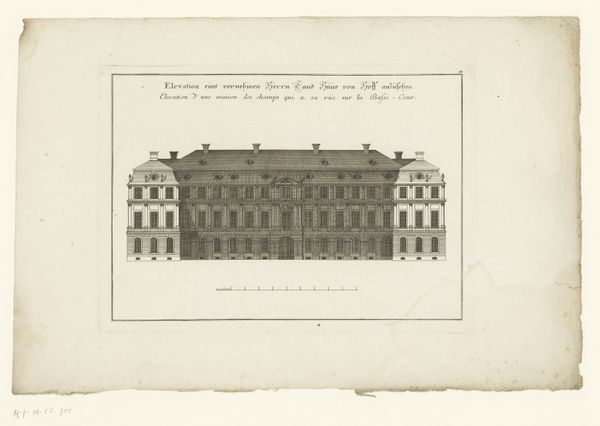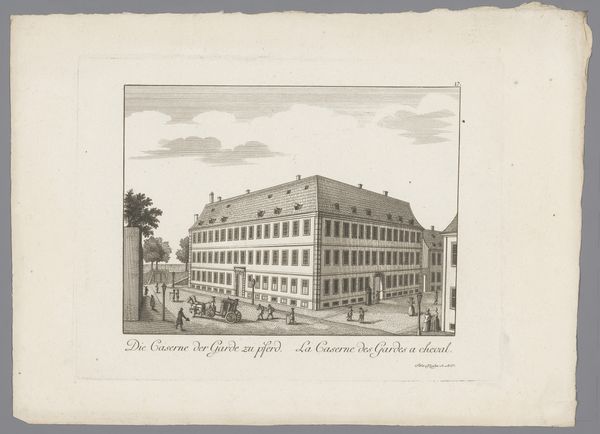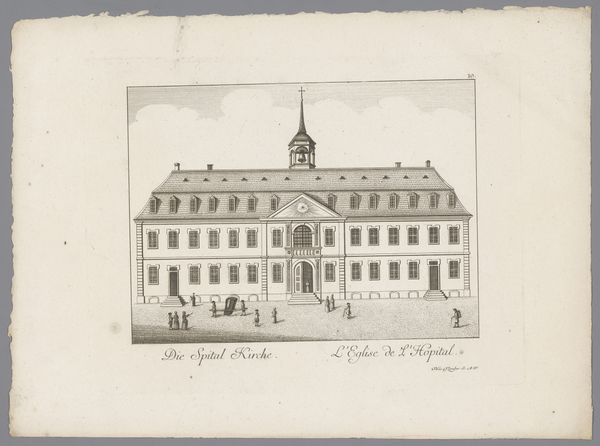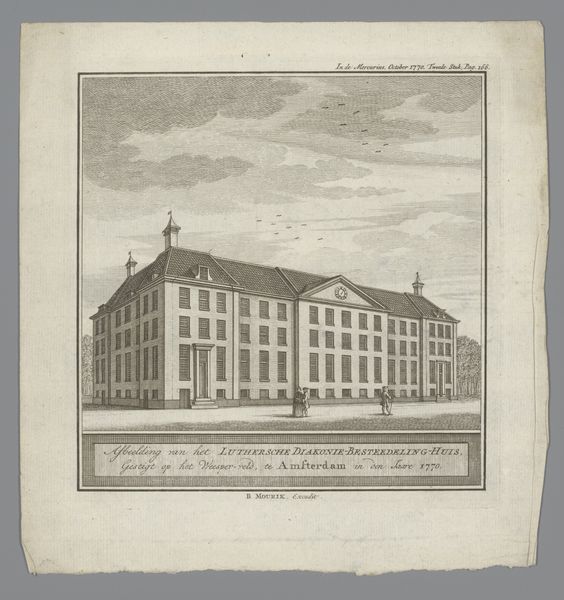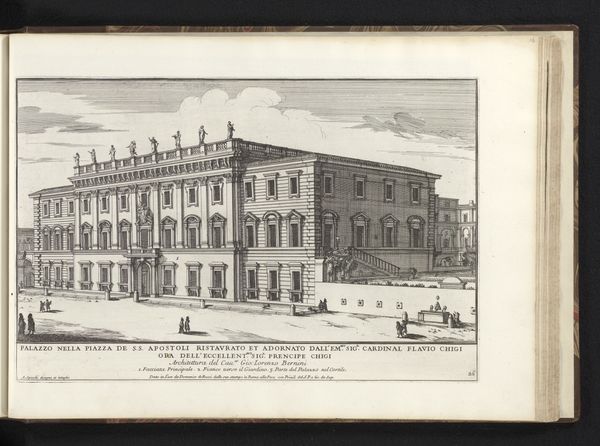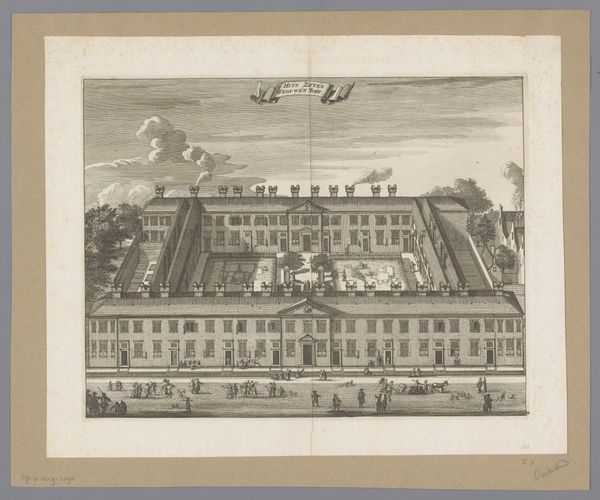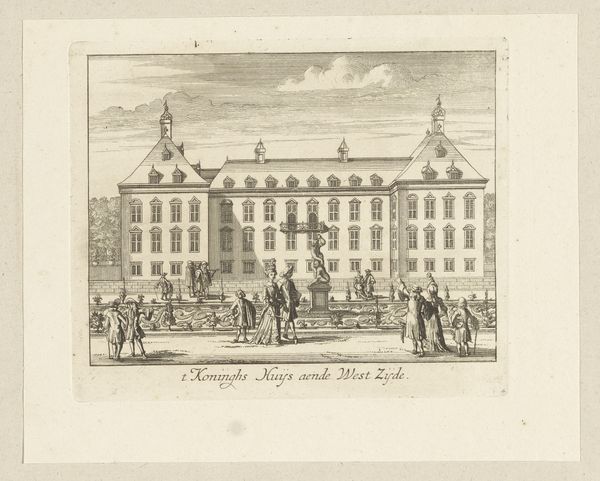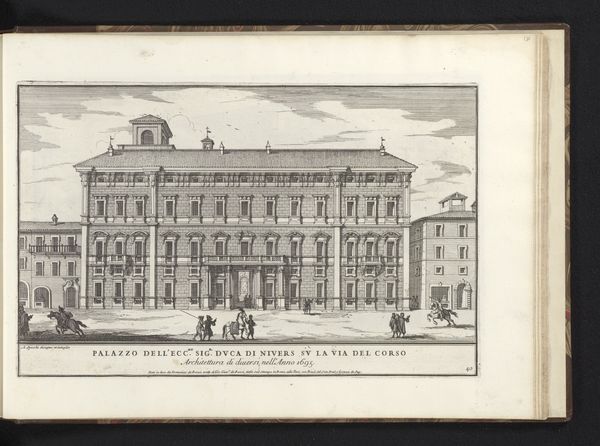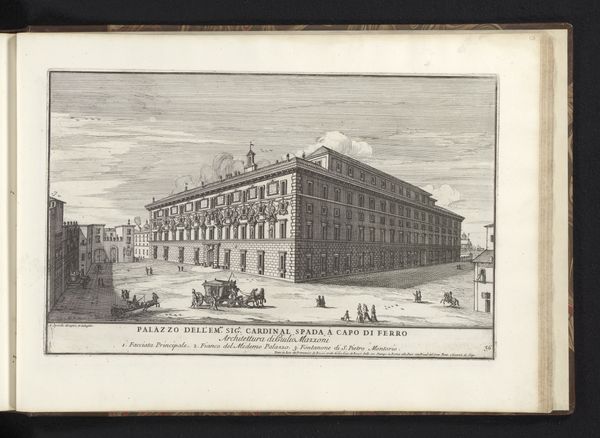
Dimensions: height 216 mm, width 280 mm
Copyright: Rijks Museum: Open Domain
Curator: Here we have an engraving by the brothers Klauber from 1782 entitled "Gezicht op het tuchthuis, te Mannheim" which translates to "View of the Penitentiary in Mannheim." Editor: Immediately, I’m struck by how…bleak it feels. The precision is admirable, of course, but the cold, repetitive lines of the architecture make it seem so imposing. Curator: Indeed. The engraving is a superb example of Baroque architectural representation. Note how the lines converge to create a sense of depth, emphasizing the scale and symmetry of the building itself. The fenestration alone…marvelous. Editor: But isn't that very symmetry and scale oppressive? We know that during this period, prisons weren’t merely places of detention, but institutions meant to reform behavior. What did this message of imposed order really signify to those living in this period? Curator: An intriguing proposition. However, consider that the city wanted to demonstrate their control and power. Baroque architecture lent itself perfectly to these declarations through its emphasis on rational organization. Editor: Yes, and consider the human element. There are people depicted in front of this edifice, but rendered so small, and perhaps deliberately, that they seem insignificant next to the penitentiary. How do you view their role within the bigger picture? Curator: The figures give scale, but primarily function as staffage elements common to cityscapes to draw the eye towards the meticulously constructed perspective lines. Editor: I believe it's far more intricate. Their relative insignificance accentuates the institution's dominance. We should consider who was incarcerated in institutions like these and their social standing. How the architecture served as a tool of power… Curator: That is certainly an interpretation one can consider, and adds layers to an understanding of a purely compositional analysis. Thank you for sharing your perspective. Editor: And thank you for delineating the formal nuances of the work itself. The engraving pushes beyond architectural documentation to a social and political statement of intent.
Comments
No comments
Be the first to comment and join the conversation on the ultimate creative platform.
